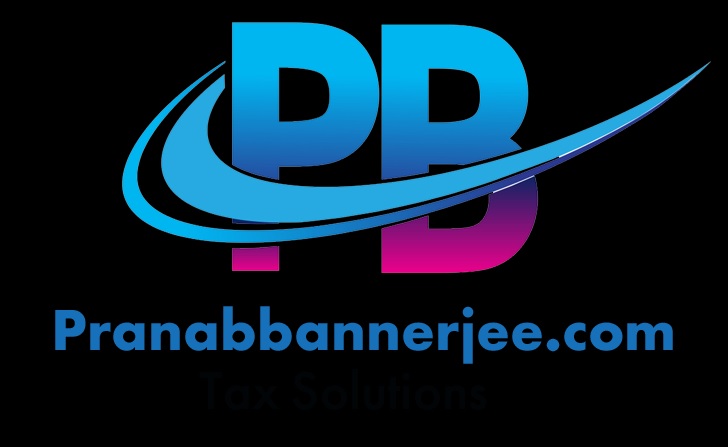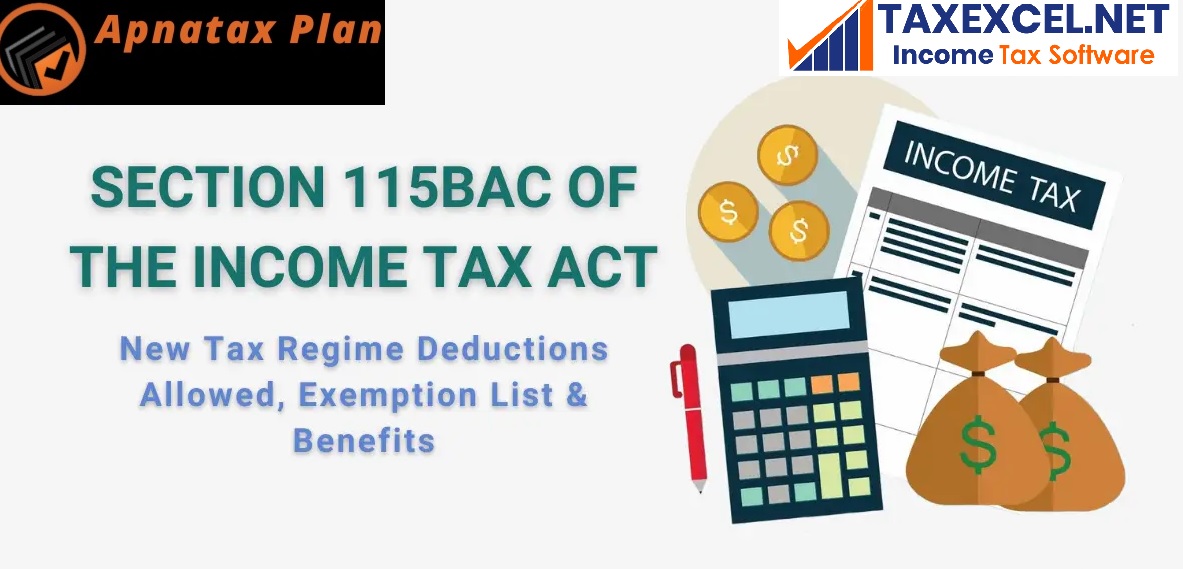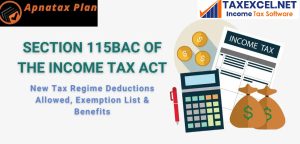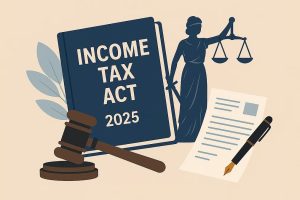Have you ever wondered why so many taxpayers are now opting for the New Tax Regime as per Budget 2025? The answer is simple — it offers lower tax rates and a simplified structure, although it removes most traditional deductions. Consequently, taxpayers must weigh convenience against tax-saving benefits.
Imagine choosing between two mobile plans — one with unlimited features at a higher price (old regime) and another with limited features at a cheaper rate (new regime). Similarly, the government introduced this regime to give you a simpler, faster, and cleaner way to calculate your taxes.
Table of Contents
ToggleTable of Contents
| Sr# | Headings |
| 1 | Introduction |
| 2 | What Is the New Tax Regime as per the Budget 2025? |
| 3 | Why the Government Introduced the New Tax Regime |
| 4 | Deductions Removed Under Chapter VI-A |
| 5 | Section 80C: No More Traditional Savings Deductions |
| 6 | Section 80D: Health Insurance Deduction Eliminated |
| 7 | Section 80E: Education Loan Interest No Longer Deductible |
| 8 | Section 80G: Donations No Longer Qualify for Tax Relief |
| 9 | Section 80TTA/80TTB: Savings and Deposit Interest Excluded |
| 10 | Deductions Still Allowed Under the New Tax Regime |
| 11 | Section 80CCD(2): Employer’s NPS Contribution Deduction |
| 12 | Section 80CCH(2): Agniveer Corpus Fund Deduction |
| 13 | Section 80JJAA: Deduction for Job Creators |
| 14 | Additional Benefits Under the New Tax Regime |
| 15 | Section 16(ia): Standard Deduction for Salaried Individuals |
| 16 | Section 87A: Enhanced Rebate Benefits |
| 17 | Family Pension Deduction: Added Relief |
| 18 | How to Choose Between the Old and the New Tax Regime |
| 19 | Step-by-Step Comparison Approach |
| 20 | Conclusion |
| 21 | FAQs |

What Is the New Tax Regime as per the Budget 2025?
The New Tax Regime, as per Budget 2025, introduces lower income tax slabs while removing most exemptions. In other words, you pay tax at reduced rates but cannot claim popular deductions. Moreover, this regime makes taxation faster and reduces paperwork. Consequently, it helps individuals who prefer a hassle-free system without complicated calculations.
Why the Government Introduced the New Tax Regime
The government launched this new structure to simplify compliance and reduce the dependency on investment-based savings. Previously, taxpayers spent time searching for tax-saving options. Now, with this reform, you can file returns more quickly. Additionally, the New Tax Regime, as per Budget 2025, encourages voluntary compliance and transparency.
Deductions Removed Under Chapter VI-A
Under the new regime, most Chapter VI-A deductions are unavailable. Although this might sound disappointing, it actually simplifies tax planning. Let’s go through which deductions are now excluded and why.
Section 80C: No More Traditional Savings Deductions
Under Section 80C, taxpayers previously claimed deductions for PPF, EPF, ELSS, life insurance premiums, home-loan principal repayment, and tuition fees. However, under the New Tax Regime as per Budget 2025, these are no longer allowed. As a result, you can now focus on genuine investments instead of tax-driven ones.
Furthermore, this change eliminates confusion about which investments qualify. Therefore, you can manage finances more effectively, without worrying about missing deductions.
Section 80D: Health Insurance Deduction Eliminated
Earlier, individuals claimed tax relief for health insurance premiums under Section 80D. Yet, this benefit has now been removed. Even so, maintaining health insurance remains wise because it protects your family from medical expenses — even if it no longer provides tax relief.
Consequently, the focus shifts from saving tax to ensuring security. Moreover, since lower slab rates already reduce the burden, many taxpayers may still end up paying less overall.
Section 80E: Education Loan Interest No Longer Deductible
Previously, Section 80E allowed deductions on interest paid for education loans. However, this benefit is now unavailable in the new tax regime. Therefore, individuals repaying education loans must calculate carefully whether the old regime still suits them better.
Still, this adjustment simplifies the structure by treating all income sources equally. Additionally, it encourages taxpayers to consider real financial value instead of purely tax-driven decisions.
Section 80G: Donations No Longer Qualify for Tax Relief
In the past, charitable donations were deductible under Section 80G. Nevertheless, under the New Tax Regime as per Budget 2025, you can no longer claim tax benefits for them. Although this may reduce financial incentives to donate, your contribution still benefits society. Moreover, your taxes stay easier to calculate.
Section 80TTA/80TTB: Savings and Deposit Interest Excluded
Interest income from savings accounts and fixed deposits — especially for senior citizens — no longer qualifies for deductions under Sections 80TTA and 80TTB. Consequently, such interest adds to your taxable income.
However, because the overall slab rates are lower, many individuals may still save more tax than before. In short, while deductions vanish, balance is achieved through reduced rates.
Deductions Still Allowed Under the New Tax Regime
Interestingly, not every deduction disappeared. Some remain to encourage savings, employment, and social security. Let’s explore these key exceptions.
Section 80CCD(2): Employer’s NPS Contribution Deduction
Unlike other sections, Section 80CCD(2) continues to provide relief. It allows a deduction for employer contributions toward the National Pension System (NPS). For F.Y. 2025-26, the government increased the limit to 14% of salary for all employees.
As a result, both government and private-sector workers gain long-term retirement security. Moreover, this section continues to promote disciplined savings habits among professionals.
Section 80CCH(2): Agniveer Corpus Fund Deduction
The New Tax Regime, as per Budget 2025, also retains Section 80CCH(2). Therefore, contributions to the Agniveer Corpus Fund remain deductible. Consequently, defence personnel serving under the Agnipath scheme still receive tax benefits, supporting the nation’s armed forces.
Section 80JJAA: Deduction for Job Creators
Businesses hiring additional employees can claim a 30% deduction on the extra cost under Section 80JJAA. This policy not only rewards employment generation but also boosts economic growth. Furthermore, it motivates employers to expand operations while reducing their effective tax rate.
Additional Benefits Under the New Tax Regime
Although the New Tax Regime as per Budget 2025, excludes many deductions, it introduces direct benefits that simplify taxation and enhance net income.
Section 16(ia): Standard Deduction for Salaried Individuals
Salaried individuals can still enjoy a standard deduction of ₹75,000. Therefore, even without other deductions, you automatically reduce your taxable income. Additionally, this change benefits nearly all employees regardless of sector or income group.
Moreover, the deduction applies automatically — you don’t need to submit any proof or paperwork. Consequently, the filing process becomes much easier.
Section 87A: Enhanced Rebate Benefits
The rebate under Section 87A increased to ₹60,000, making income up to ₹12 lakh tax-free. Consequently, middle-class taxpayers enjoy significant relief.
Furthermore, this measure boosts disposable income, encouraging spending and saving alike. As a result, the New Tax Regime, as per Budget 2025, supports both individual and economic growth.
Family Pension Deduction: Added Relief
Family members receiving pensions after the death of an employee can still claim a standard deduction of ₹25,000 or one-third of the pension amount, whichever is lower. Therefore, the new regime provides essential support to dependent families. Moreover, this continues to reflect the government’s commitment to fairness and compassion.
How to Choose Between the Old and New Tax Regime
Selecting the right regime depends entirely on your income, investments, and goals. For instance, if you invest heavily in PPF, insurance, or housing, the old regime may still save more tax. Conversely, if you prefer a cleaner system without proofs and documents, the New Tax Regime as per Budget 2025 suits you better.
Moreover, because both regimes coexist, you have complete freedom to choose annually. Therefore, analysing your tax outflow each year helps you make an informed decision.
Step-by-Step Comparison Approach
Follow these steps to determine which regime fits you best:
- Calculate tax under the new regime.
Include the standard deduction, the enhanced rebate under Section 87A, and the latest slab rates. - Calculate tax under the old regime.
Add deductions for 80C, 80D, 80E, and 80G, plus housing and HRA exemptions if applicable. - Compare both outcomes.
Whichever regime results in lower tax liability should be your choice.
Consequently, you can switch logically rather than emotionally. Additionally, keeping a record of both calculations helps in future financial planning.
Conclusion
To summarize, the New Tax Regime as per Budget 2025 focuses on simplicity, fairness, and transparency. Although it eliminates popular deductions under Chapter VI-A, it compensates through lower rates, higher standard deductions, and better rebates.
Therefore, before filing your income tax return for F.Y. 2025-26, evaluate both options carefully. After all, the right choice today can save you thousands tomorrow. In short, the new regime may not reward tax-saving investments, but it certainly rewards clarity and simplicity.
Frequently Asked Questions (FAQs)
- Can I switch between the old and new tax regimes every financial year?
Yes. Salaried individuals can choose either regime each year before filing returns. However, business owners must choose more cautiously as switching frequently may not be permitted for them. - Do I still need to provide investment proofs under the new regime?
No. Since the New Tax Regime as per Budget 2025 removes most deductions, you don’t need to submit proofs. Consequently, your documentation burden reduces significantly. - Does the new regime favor salaried employees more than business owners?
Not necessarily. While salaried taxpayers enjoy a standard deduction, business owners benefit from Section 80JJAA. Therefore, both groups gain in different ways. - Is the National Pension System (NPS) still useful under the new regime?
Absolutely. The employer’s contribution to NPS under Section 80CCD(2) remains deductible. Moreover, NPS continues to offer retirement stability and long-term savings. - Who benefits most from the New Tax Regime as per Budget 2025?
Individuals with fewer investments and simple incomes benefit the most. Consequently, this regime works best for young professionals, freelancers, and employees who prioritize ease over extensive tax planning.
Detailed Comparison: Old vs. New Tax Regime (F.Y. 2025-26)
To help you decide better, let’s compare both regimes side by side. The table below outlines the income tax slabs, rates, and major differences between the two systems for the financial year 2025-26.
| Income Range (₹) | Old Regime Tax Rate | New Tax Regime as per Budget 2025 Tax Rate |
| Up to ₹3,00,000 | Nil | Nil |
| ₹3,00,001 – ₹6,00,000 | 5% | 5% |
| ₹6,00,001 – ₹9,00,000 | 10% | 10% |
| ₹9,00,001 – ₹12,00,000 | 15% | 15% |
| ₹12,00,001 – ₹15,00,000 | 20% | 20% |
| Above ₹15,00,000 | 30% | 30% |
Note: The New Tax Regime as per Budget 2025 has made itself the default tax regime. Therefore, if you do not specify your preference while filing your return, the new regime will automatically apply.
Moreover, the rebate under Section 87A now ensures that income up to ₹12 lakh becomes effectively tax-free, which was previously limited to ₹7 lakh. Consequently, this substantial increase directly benefits millions of middle-class taxpayers.
Advantages of the New Tax Regime as per Budget 2025
The New Tax Regime as per Budget 2025 isn’t just about lower rates — it’s also about simplicity, speed, and inclusivity. Let’s explore the benefits that make it appealing:
- Simplified Tax Filing – You no longer need to track multiple deductions or submit investment proofs.
- Faster Refunds – Fewer adjustments mean quicker processing.
- Higher Take-Home Pay – With enhanced rebates and standard deductions, you retain more income.
- Flexibility – Salaried individuals can switch between old and new regimes each year.
- Transparency – The flat structure eliminates ambiguity and reduces errors.
Moreover, the streamlined process saves time and effort, especially for those managing multiple income sources.
Disadvantages of the New Tax Regime
However, despite its simplicity, the new regime may not benefit everyone equally. Let’s look at a few drawbacks:
- Loss of Popular Deductions – You cannot claim exemptions like HRA, 80C, 80D, or 80E.
- No Incentive for Savings – Since deductions are gone, fewer people might invest in long-term instruments like PPF or ELSS.
- Limited Benefits for Senior Citizens – The removal of 80TTB impacts retirees who rely on interest income.
- Higher Tax for Investors – Those with insurance or home loan repayments might pay more tax than before.
Nevertheless, the trade-off between complexity and convenience continues to drive the debate between both regimes.
Who Should Choose the New Tax Regime?
The New Tax Regime as per Budget 2025 works best for certain groups. You should consider this regime if:
- You don’t invest much in tax-saving instruments.
- You prefer simpler tax filing without documentation.
- You have consistent salary income without variable components like HRA or LTA.
- You fall under the middle-income group earning below ₹12 lakh.
On the other hand, if you have multiple deductions available, the old regime may still reduce your overall liability.
Tips to Optimize Your Tax Planning in 2025
Even under the new regime, you can still save smartly and plan effectively. Consider these practical steps:
- Maximize Employer Benefits – Ensure your company contributes to NPS to claim Section 80CCD(2)
- Use the Standard Deduction Fully – Don’t forget the automatic ₹75,000 relief.
- Plan with the Rebate in Mind – If your income is near ₹12 lakh, use eligible adjustments to bring it below the rebate limit.
- Stay Updated – Budget 2025 introduced several changes, so always refer to the latest circulars.
- Consult a Tax Advisor – Personalized advice ensures you don’t miss key opportunities.
Consequently, combining smart financial planning with an informed tax choice can help you maximize your savings.
How Budget 2025 Simplified Taxation
Budget 2025 didn’t just adjust rates — it redefined simplicity. For instance, it unified slab structures, extended rebates, and standardized deductions. Moreover, the budget promoted ease of filing and encouraged individuals to declare incomes honestly.
Therefore, instead of chasing tax-saving schemes, taxpayers can now focus on real wealth creation through better investments and financial discipline.
Impact of the New Tax Regime on Different Income Groups
1. Low-Income Earners (Below ₹7 lakh)
They benefit the most due to zero tax under the enhanced Section 87A rebate. Consequently, many low-income individuals now have complete tax relief.
2. Middle-Income Earners (₹7 lakh – ₹12 lakh)
They enjoy both the standard deduction and rebate expansion, resulting in significant savings. Moreover, the reduced slab rates ensure higher disposable income.
3. High-Income Earners (Above ₹15 lakh)
They gain moderately since their deductions are removed. However, due to simplicity and reduced compliance, even they find the new system more efficient.
The Future of Taxation in India
The New Tax Regime as per Budget 2025 represents a shift toward a digital-first, transparent, and investment-neutral taxation model. Eventually, the government may phase out the old regime entirely once most taxpayers transition.
Moreover, as India advances economically, the focus will shift from “tax-saving” to “tax-smart” planning — where financial literacy plays a more vital role than exemptions.
Final Thoughts
Ultimately, the New Tax Regime as per Budget 2025 gives you control and flexibility. Although it removes familiar deductions, it simplifies your life through clarity and fairness. Before filing your taxes for F.Y. 2025-26, analyze your numbers, evaluate both regimes, and make the choice that fits your lifestyle and financial goals best.
After all, the best regime isn’t the one with the most benefits — it’s the one that aligns with your unique financial journey.
Frequently Asked Questions (FAQs)
- Is the New Tax Regime compulsory for F.Y. 2025-26?
No. Although it is now the default regime, you can still opt for the old one while filing your return. - Can I claim HRA under the New Tax Regime as per Budget 2025?
No. The new regime removes HRA, LTA, and other allowances. - Will senior citizens benefit from the new regime?
Partially. They gain from lower slab rates but lose deductions like 80TTB. - Can I change the regime every year?
Yes, salaried employees can switch annually. However, business owners can switch only once. - Does the new regime promote long-term financial planning?
Yes and no. While it removes tax-based investment incentives, it encourages genuine wealth creation through smarter choices.




